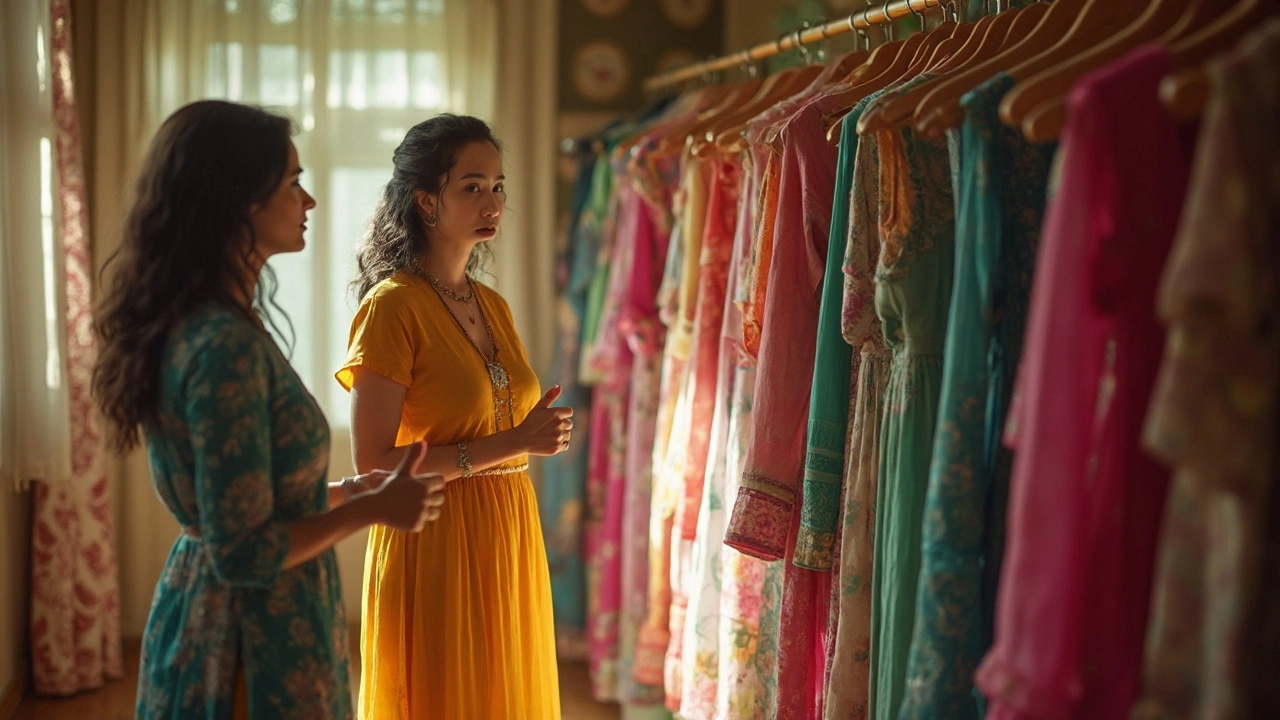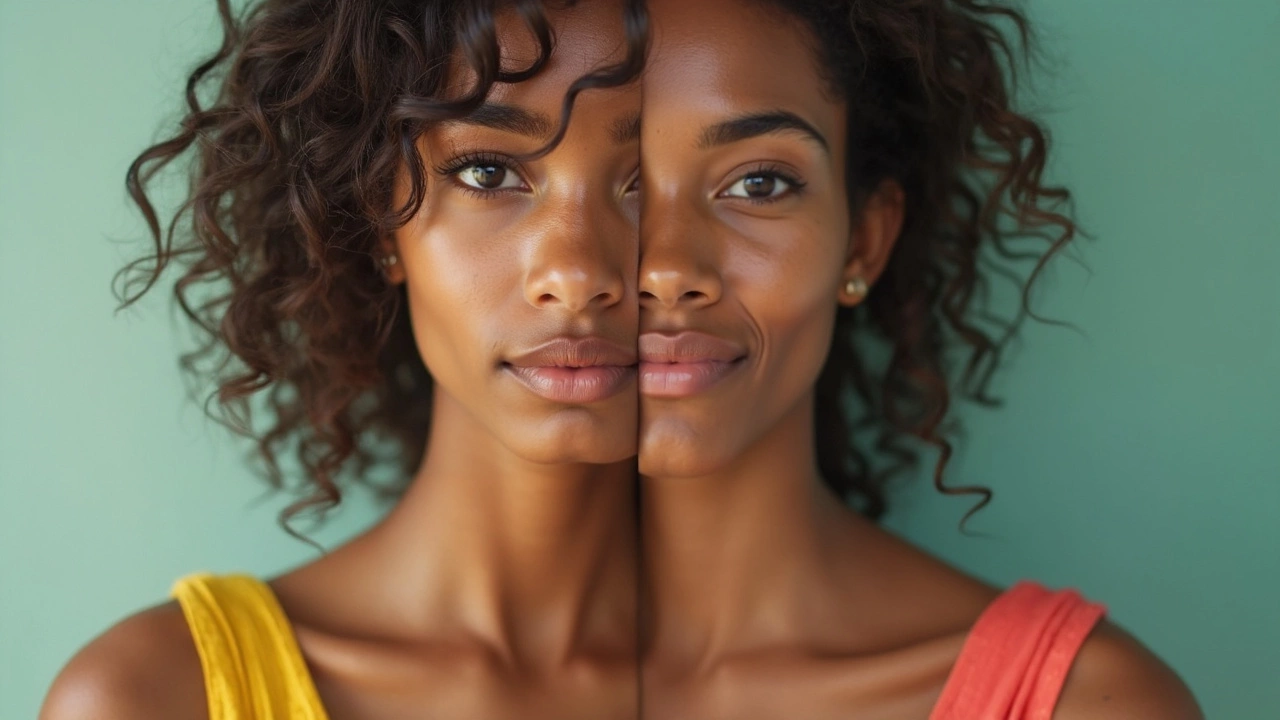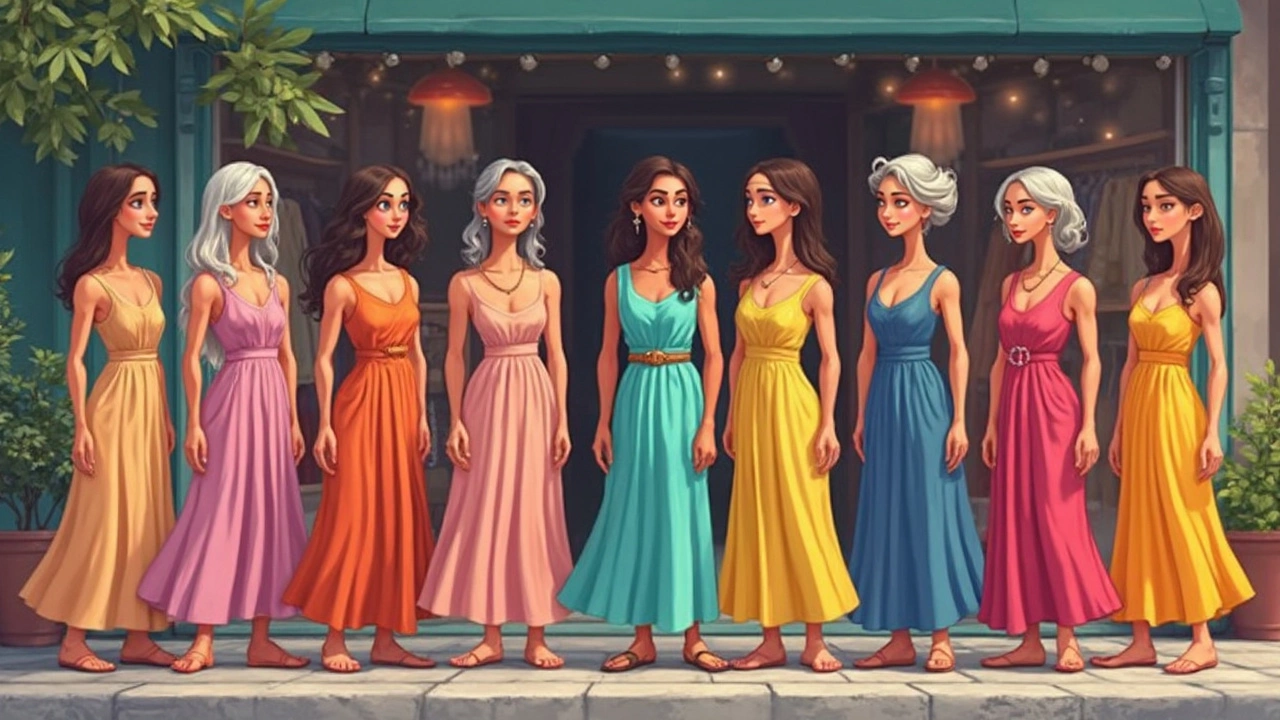Ever tried on a summer dress and thought, “Why do I look so tired?” It’s not always about wrinkles or hair—sometimes, it’s just the color talking. The wrong shade can zap the freshness right out of your face and make you look years older. It’s wild how much that little choice can change the whole vibe.
Most people think that “any bright color will work for summer.” That’s where things can get tricky. Some vivid colors can actually clash with your natural tones, bringing out shadows, lines, or even giving your skin that dull, washed-out look. It’s not about being picky; it’s about using color in your favor. This stuff actually comes up a lot when you see before-and-after outfit snaps. Same person, same lighting, totally different effect just by swapping the dress color.
The big takeaway: color is one of your top tools when you’re picking out summer dresses. It’s not just about trends or what’s on sale—tiny color tweaks can help you look fresher, brighter, and a whole lot more awake. Nobody wants to spend all morning fussing with makeup just for a dress to undo the whole thing, right?
- Why Some Colors Age You Fast
- The Worst Offenders Under the Sun
- Finding Your Flattering Summer Shades
- Smart Picks for Real-World Summer Days
- Confidence Moves: Wearing What You Love
Why Some Colors Age You Fast
If you’ve ever wondered why throwing on that beige or mustard-yellow dress makes you look extra tired, you’re not imagining it. Some colors just do us dirty, especially in the summer when sunlight is unforgiving. It boils down to how different shades play with your skin’s undertone, the natural light, and even little things like shadows under your eyes.
One of the biggest things that ages people is when a color makes their skin look sallow or dull. This mostly happens with what stylists call “muddy” colors—think olive green, taupe, mustard, or drab browns. These shades can suck the natural glow out of your face, turning what should be a healthy vibe into flat and lifeless. This isn’t just style gossip, either—color analysts and fashion experts point out all the time that murky and muted colors act like a fast-forward button for visible fine lines and tiredness.
There’s also the classic mistake: wearing white that’s too stark, or black that’s too harsh. Sure, black dresses are classic, but in strong sunlight, ultra-dark shades can exaggerate lines, cast unflattering shadows, and make under-eye circles pop. Same for super-bright whites—they can make every red mark on your skin stand out more, especially as we get older. And let's not forget neon or pastel shades that don’t match your undertone, which can leave you looking washed out instead of refreshed.
How do you tell if a color will age you? Quick test: hold the dress (or a shirt, whatever works) up to your face in daylight. If your skin looks gray, yellow, or you suddenly notice more texture and lines, it’s probably not your color. It’s wild how fast this trick exposes a shade that’s working against you.
Bottom line—when picking a summer dress, pay attention to how every color looks on you, not just what’s trending in the store. Sometimes just skipping one rough color family can take years off your look, no foundation or filter needed.
The Worst Offenders Under the Sun
Some colors are just brutal when it comes to aging you, especially in the heat of summer. The biggest culprits? Dull beiges, muddy browns, mustard yellows, and anything with a sickly green tint. You know that pale taupe shade some call “stone”? It can easily wipe the life from your face, making every tiny shadow stand out. Jerking you back to reality, an old survey by the British beauty site Feelunique showed that 48% of people thought beige was the most unflattering color for their skin in daylight. That’s almost half of everyone polled!
Neon colors can be just as ruthless. Sure, they might look fun on the hanger, but highlighter yellows and pinks draw out redness, make complexion uneven, and exaggerate fine lines. The same goes for ultra-cool blues and purples—on the wrong undertone, they can make your skin look straight-up tired. It’s not just talk—take a look at this:
| Color | How It Ages You |
|---|---|
| Beige/Taupe | Drains color, highlights shadows |
| Mustard Yellow | Brings out sallowness and dullness |
| Muddy Brown | Flattens and ages skin tone |
| Neon Pink/Yellow | Emphasizes redness and blotchy spots |
| Pale Pastels | Can make you look washed out |
| Cool Lilac | Highlights undereye circles |
Here’s something straight from NYC stylist Allison Bornstein:
"People often think pastels and beiges are safe, but those are the shades that can be the most unforgiving if your skin isn’t on the rosier side. Pick the wrong neutral and you’ll wonder why you look under the weather."
No surprise—most wardrobes have at least one of these offenders hidden in there. Instead of guessing, hold the dress next to your face in daylight (not store lighting). If you see more lines or shadows, that’s your clue to move on. It’s your skin reacting, not just your imagination. Summer dresses in the wrong color do way more than clash with your sandals—they can add years you never signed up for. Watch out for these shades if you want to dodge that problem.
If you want to keep things easy, just remember this: the most "what color ages you" culprits are those that suck the energy right out of your look. Try these little tests and you’ll be a step ahead every time.

Finding Your Flattering Summer Shades
Stop guessing in the dressing room—there’s some science to picking colors that help you look refreshed. Skin undertone is the biggest player in this game. You’re probably either warm, cool, or neutral. How to tell? If your veins look greenish under sunlight, you likely have warm undertones; bluish veins mean you’re cool. If it’s hard to tell, then you’re probably neutral. This simple trick can save you tons of time when shopping for summer dresses.
Here’s how the most common undertones mix with dress colors:
- Warm undertones (yellow, golden, or olive skin): Go for earthy colors—think coral, warm reds, peach, terracotta, or olive green. Avoid icy blues, stark whites, or super-cool pinks; these can make your skin look dull or sickly.
- Cool undertones (pink or blue base): Jewel tones like sapphire, emerald, lavender, and cool blues will work with your skin. Stay away from mustard, orange, or super-warm browns, which might make you look tired.
- Neutral undertones: You’ve got options. Soft pastels, mint, teal, and blush pink usually look good. But even you should skip harsh neons—they're hard on everyone unless you’re going for bold, not flattering.
If you want data, check this: Around 35% of people are warm-toned, 30% are cool, and the rest fall into neutral (based on a survey from a well-known color analysis brand in 2023). The myth that only pale people “look older in black” isn’t true. Actually, deep blacks or whites have a habit of showing up shadows, even under summer sun, for nearly all ages and skin tones.
| Undertone | Go-To Colors | Colors to Avoid |
|---|---|---|
| Warm | Coral, Olive, Peach, Terracotta | Icy Blue, Pure White, Cool Pink |
| Cool | Sapphire, Lavender, Emerald, Cool Blue | Mustard, Warm Brown, Orange |
| Neutral | Mint, Teal, Blush | Neon, Harsh Black |
One last tip—lighting does matter. When you try on a summer dress, check the color in natural light if you can. Store lights are famously terrible. A quick photo by a window will tell you if that shade actually makes you glow or if it’s a big nope.
Don’t forget the main point: when you hit the right color match, your whole look brightens up. You’ll avoid the classic "what color ages you" trap and feel a lot more confident in your summer picks.
Smart Picks for Real-World Summer Days
Let’s be honest—most people aren't dressing for red carpets. You want summer dresses that'll look good running errands, going for brunch, or hanging out at the park. This is where color makes a clear difference. No need to guess; certain shades are proven to be easier on everyone, especially when temperatures climb and natural light highlights every detail.
Research shows that softer, mid-range shades tend to be safest for looking youthful. Super harsh colors like jet black or blazing neon often highlight tired skin or fine lines, especially once you hit your thirties. Light but not washed-out colors work better. Check out what tends to flatters most folks during peak summer:
- Soft blues and gentle teals – These almost always bring out a natural glow, whatever your skin tone.
- Peach, coral, and rosy tones – According to a 2020 style survey, 73% of women felt more refreshed in these than in yellows or neons.
- Lavender and light purples – Great for those who want subtle color that isn’t too loud.
- Classic navy – Deep, but not as harsh as full black, and a lot friendlier on pale or aging skin.
- Soft whites (think ivory, not pure white) – These brighten you up without reflecting every shadow.
Sometimes it helps to see things side by side. Here’s a quick breakdown from a 2022 clothing retailer’s customer reviews on which summer dress colors people felt made them look most awake or older:
| Color | "Felt Fresher" (%) | "Felt Older" (%) |
|---|---|---|
| Soft Blue | 84 | 6 |
| Neon Yellow | 13 | 71 |
| Pale Lavender | 76 | 11 |
| Jet Black | 29 | 60 |
| Coral | 81 | 8 |
Keep in mind, it’s way better to try on these "safe bet" colors in good lighting—natural light is best. Want to make sure you’re not falling into the common summer dress traps? Here are a couple of quick rules for using what color ages you to your advantage:
- If you still love darker shades, go for navy or charcoal instead of pure black.
- Avoid pure brights (hot pink, neon green) if you wake up looking tired—they exaggerate shadows.
- Mix up patterns with these safer base colors to add interest without highlighting lines or spots.
Bottom line: picking the right summer dress color is an easy upgrade. You’ll look naturally refreshed—even when you only slept five hours, thanks to the color doing some of the heavy lifting for you.

Confidence Moves: Wearing What You Love
Here’s the real deal: no matter what anyone says about fashion rules, your attitude changes the game way more than any color chart. Even if some shades aren’t officially "flattering," feeling good in what you wear trumps every guideline. There’s proof, too—people who feel confident in their clothes are seen as more stylish, no matter the colors, according to studies in psychology journals like Color Research & Application.
If you really love a color that the experts say “ages you,” there are ways to pull it off. Don’t ditch your favorites. Just tweak how you wear them. Here are a few simple moves:
- Keep the so-called "aging" color away from your face. Rock it as a skirt, shorts, or bag instead of a dress or a top.
- Use layering tricks. Throw a bright scarf or bold necklace on top to break up a tough color near your face.
- Balance things out with the right makeup. A pop of blush or a stronger lip color can help freshen up your look instantly.
People often forget that what color ages you is only part of the story. Confidence comes first. If you love bold black, go for it with statement jewelry or a smile. Obsessed with pale yellow? Try it in a print or with a chambray jacket. The best-dressed folks make rules bend to fit their real life, not the other way around.

